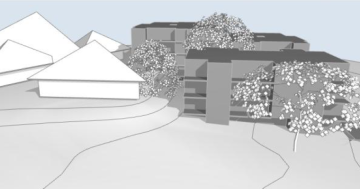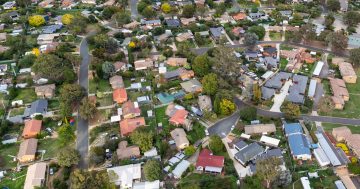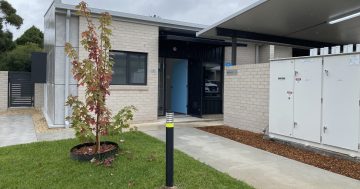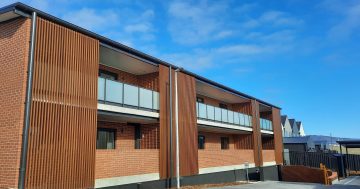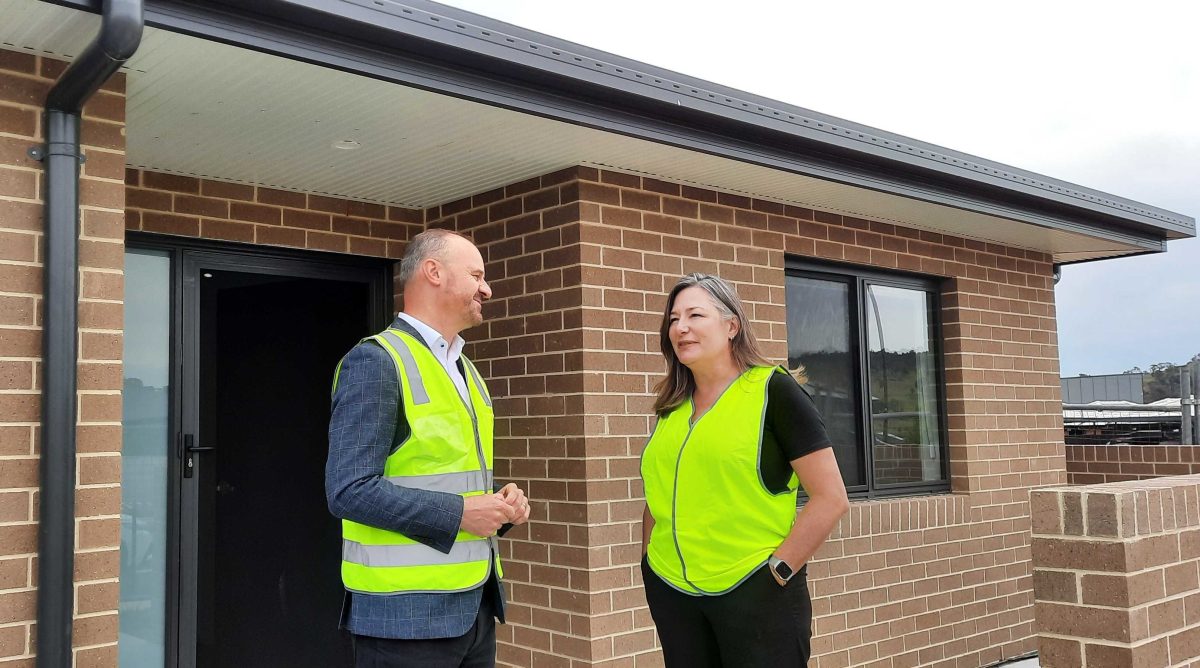
Chief Minister Andrew Barr and Housing and Suburban Development Minister Yvette Berry at a new public housing property in Whitlam. Photo: Ian Bushnell.
ACT Labor has promised to add a further 1000 homes to the Territory’s public housing stock as part of a plan to deliver 5000 extra affordable rental dwellings by the end of 2030.
This would be on top of the existing Growing and Renewing Public Housing Program and increase the Housing ACT property portfolio to 13,200 homes by the end of 2030.
Land would be released specifically for affordable housing and the delivery of new public housing would be fast-tracked by declaring it a major project in the next term of government if Labor is re-elected.
The 5000 homes would be a mix of public, community and affordable properties, financed through budget outlays and strategic partnerships with Housing Australia (through the Housing Australia Future Fund), superannuation funds, community housing providers and build-to-rent providers.
Chief Minister Andrew Barr called on the federal Greens in particular and the Liberals to stop playing politics and stop blocking government legislation that would unlock more build-to-rent and shared-equity housing for the ACT market.
The Affordable Housing Project Fund would also be boosted to $100 million to support the construction of hundreds of additional affordable rental properties.
Labor would also partner with larger states such as NSW and Queensland to purchase, at scale, modular housing that would slash the delivery time for and cost of public housing.
Labor would also spend $5 million to target chronic homelessness, youth homelessness, older women and those escaping domestic violence.
It would set aside 75 public housing properties for specialist housing and homelessness services, including Aboriginal Community Controlled Organisations, adding to the more than 700 already operated in partnership with community housing providers.
Housing and Suburban Development Minister Yvette Berry denied the boost to public housing stock was an admission that the renewal program had not been ambitious enough.
“That’s about building on what we’re already delivering,” she said.
Ms Berry said the construction sector was normalising after the pandemic and delivery times had fallen from 12-18 months to nine.
Mr Barr, in a shot at the Greens, who are promising 10,000 public housing homes over a decade, said Labor was only promising what it could deliver.
“We’re putting forward a plan that is deliverable, which is within the capacity of the construction sector in the ACT and is also within the financial capacity of the Territory Government,” he said.
Ms Berry said new homes would be a mix of typologies from four-bedroom homes to units, but those most in need were two-bedroom dwellings.
They would be in green and brownfield areas, and would include knockdown rebuilds and purchases from the market.
Ms Berry said pilot schemes of prefabricated homes in the ACT had shown promise and Labor hoped to take advantaged of this emerging sector as well, working with interstate suppliers and the NSW and Queensland governments to maximise purchasing power.
“It’s a really exciting time to be able to look at these other innovations and work with other communities and states and territories about what we can actually deliver here in the ACT,” she said.
“We’ve seen the example here in the ACT of prefabricated concrete homes, [where] a four-bedroom home could be delivered in 12 weeks. It’s quite remarkable, the time frames.”
Ms Berry said the Housing Australia Future Fund itself would generate hundreds of new affordable rental homes.
Mr Barr said affordable rentals would also be set aside for key workers.
“We’ll have a separate announcement with some further detail on the specific projects and locations, but one obvious example is associated with the Bruce Precinct and the new Northside Hospital,” he said.
